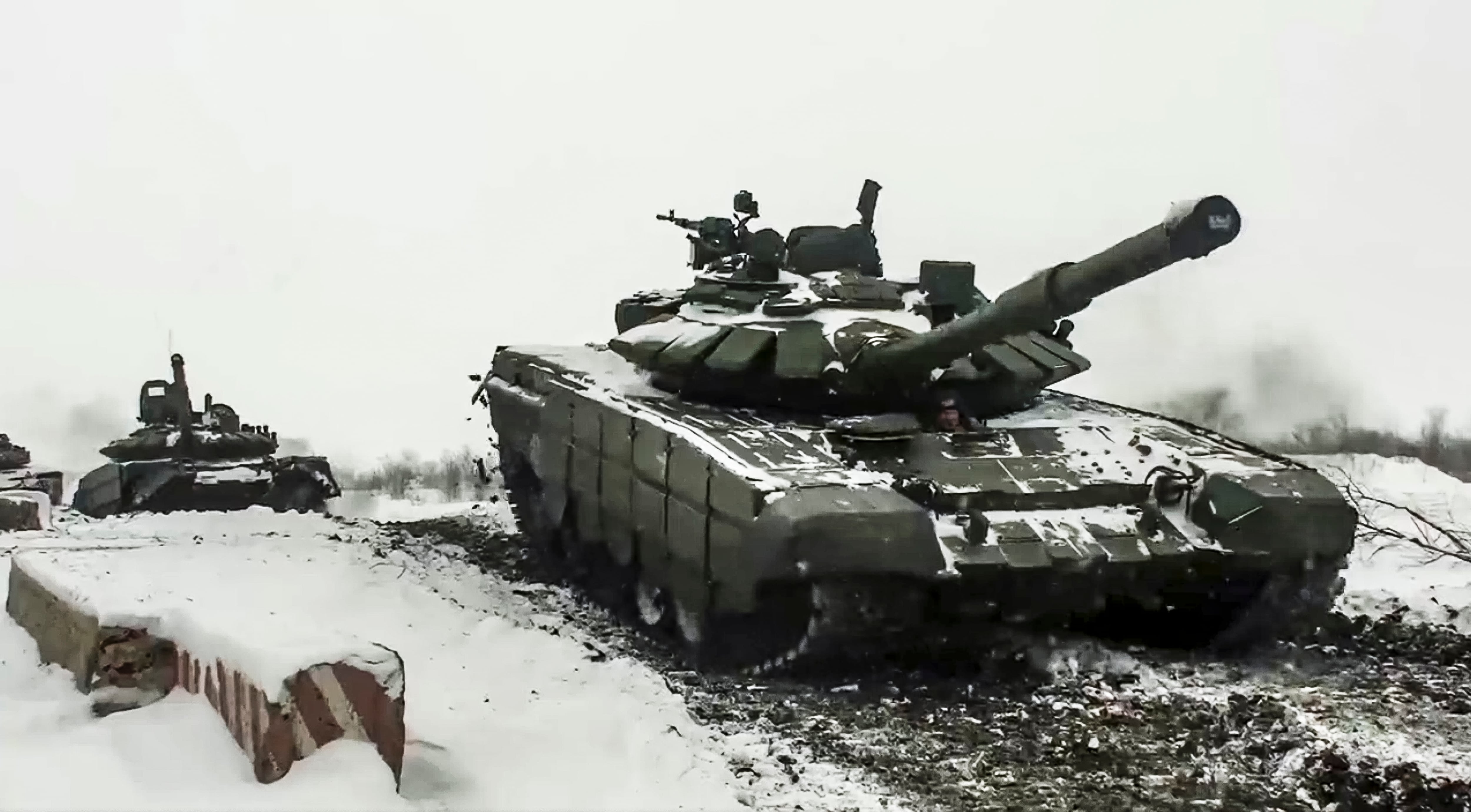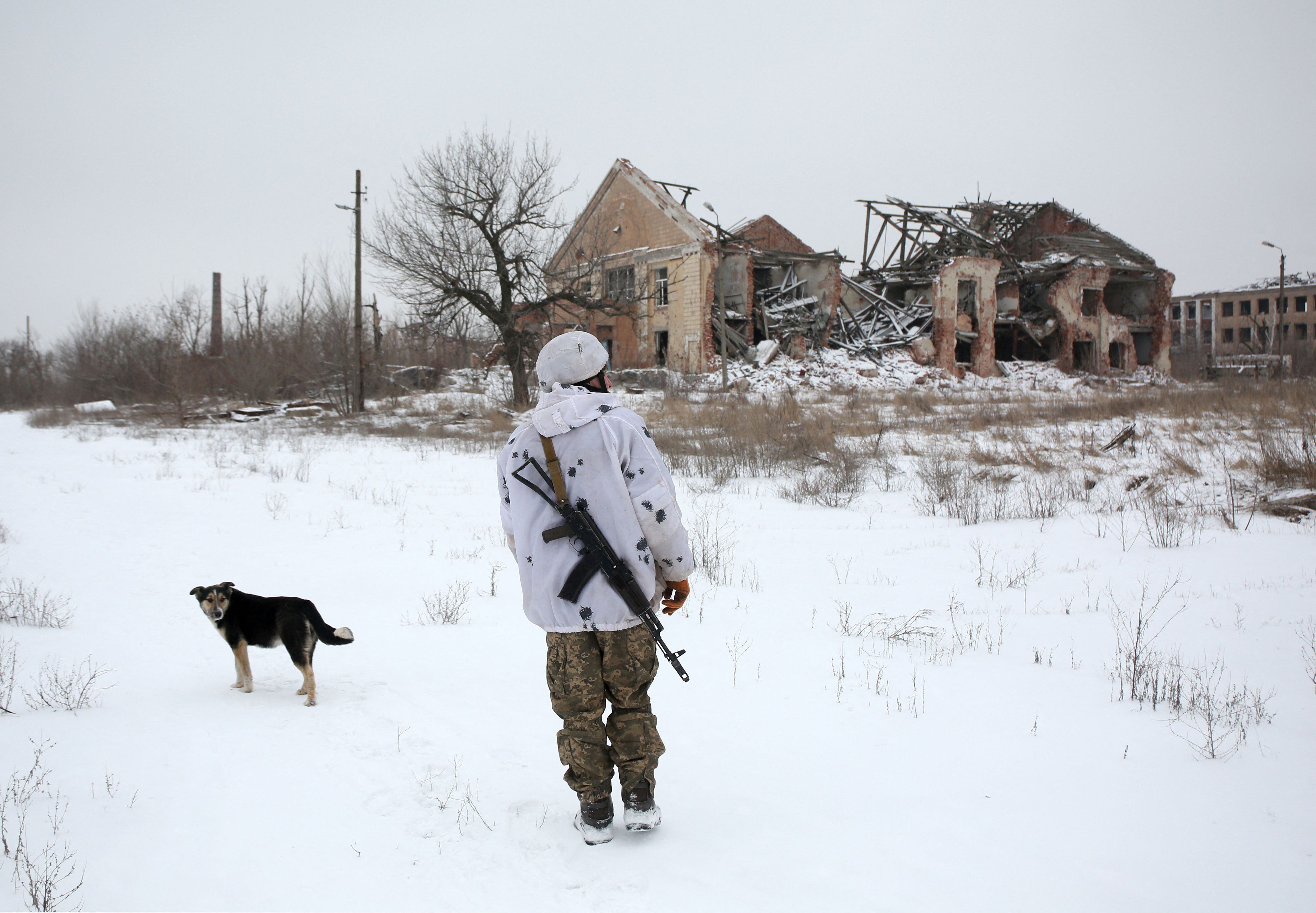WASHINGTON ― U.S. defense leaders warned Friday that President Vladimir Putin “clearly now has the ability” to have his forces invade Ukraine with “very, very little warning,” but that U.S., NATO and Ukrainian forces stand ready to respond if that happens.
Tensions over a buildup of more than 100,000 Russian troops on the border of Ukraine have triggered warnings from the Biden administration that it would respond with stiff sanctions and by sending U.S. troops to reinforce NATO in Europe. The statements from Defense Secretary Lloyd Austin and Joint Chiefs Chairman Gen. Mark Milley seemed to signal that, despite diplomatic efforts to avert war, a conflict was now closer at hand than ever.
The comments came a day after President Joe Biden warned Ukraine’s president that there is a “distinct possibility” Russia could take military action against Ukraine in February. The Kremlin had also sounded a grim note, saying it saw “little ground for optimism” in resolving the crisis after the U.S. this week again rejected Russia’s main demands.
At a rare press conference for Austin and Milley, they cautioned that a Russian attack could be imminent, with terrible consequences. The appearance marked a shift from the Biden’s administration’s emphasis for weeks on the State Department and back-and-forth efforts to find a diplomatic off-ramp.
“While we don’t believe that President Putin has made a final decision to use these forces against Ukraine, he clearly now has that capability, and there are multiple options available to him,” Austin told reporters.
RELATED

This week Russia’s top diplomat said that Russia will not start a war, and Ukrainian military assessment shared with Military Times Russia is not ready yet to launch a full-scale attack.
On Friday, Milley said that the array of Russian forces deployed means that Putin retains a “wide scale of options.”
“With 100,000 troops, and you’ve got combined arms formations, ground maneuver, artillery, rockets, you got air and all the other piece-parts that go with it, there’s a potential that they could launch with very, very little warning,” Milley said. “That’s possible, and there’s a wide scale of options that are available to Russian leadership, and the best option they should pick, in my view, is a diplomatic solution.”
Ukraine’s freezing lakes and rivers mean Russia’s tracked military vehicles have prime conditions to invade, and Ukraine’s civilian populations could “suffer immensely” if they do, Milley said.
But Milley warned that Ukrainian forces have improved since Russia seized Crimea in 2014.
“If Russia chooses to invade Ukraine, it will not be cost free in terms of casualties, or other significant effects,” Milley said.
Milley further warned that NATO’s forces are “very, very significant,” with more than 130 brigades of maneuver forces, 93 squadrons of high-end fighters, four aircraft carriers and “many more” surface combatants.
Biden has said that the U.S. will not unilaterally send troops to defend Ukraine, the Pentagon has placed a number of U.S. military units on heightened alert that they may deploy to NATO’s eastern front.
The Pentagon is walking a fine line with its actions and rhetoric: On the one hand, its leaders want to demonstrate a commitment to NATO, while telegraphing both a willingness and capability to react to Russian aggression; on the other, they don’t want to provoke Russia to make the first move.

“We haven’t actually moved any troops. We put troops on on higher alert,” Austin said. “And the second point that I would make is that even if and when we do move troops, the purpose of those troops deploying would be to reassure allies, or directly in support of NATO.”
On Monday, the department announced that up to 8,500 troops had been put on heightened alert, shortening their recall times to as little as five days.
Those alerted units include bits and pieces from nearly all of the Army’s active divisions, including the 82nd Airborne Division, 101st Airborne Division, 3rd Infantry Division and 4th Infantry Division, as well as a handful of Air Force units.
RELATED

They are from a mix of backgrounds, including combat arms, medical, logistical and aviation support. Not all are destined for a NATO mission, Pentagon spokesman John Kirby told reporters on Tuesday, as some could be sent on unilateral missions to individual allied countries.
“Our focus is on making sure that we’re ready to live up to our commitment to NATO should the NATO Response Force be activated by NATO,” Austin said. “This, putting our forces on a shorter chain, enables us to get there and in a shorter period of time. And, again, I think that provides reassurance to NATO, that we’re ready to live up to our commitments”
Asked whether the U.S. would send more U.S. military trainers to assist Ukrainian forces, Austin avoided specifics but reiterated that the U.S. has had a rotating training mission in Ukraine since 2014, and it continues. There are currently fewer than 200 members of the Florida National Guard on a training and advising mission in Ukraine at the moment.
The Pentagon does not typically disclose prepare-to-deploy orders, but Austin said the move “should provide reassurance to NATO that we are ready to live up to our commitments” under the pact’s core mutual-defense agreement, Article 5.
“The U.S. has a small contingent of U.S. and NATO advisors and trainers currently in Ukraine,” Milley said. “The United States has zero offensive combat weapon systems nor any permanent forces nor bases in Ukraine. Our role is limited in that we help train, advise and assist with tactics, techniques and procedures.”
As another shipment of U.S. arms for Ukraine arrived Friday, Austin said America remains committed to helping Ukraine defend itself through “security assistance material.” This follows the arrival of American Javelin anti-armor weapons grenade launchers in Ukraine earlier in the week as part of a $200 million tranche Biden approved in December.
Since 2014, the U.S. has committed more than $2.7 billion in security assistance to Ukraine, with $650 million in the last year alone.
Joe Gould was the senior Pentagon reporter for Defense News, covering the intersection of national security policy, politics and the defense industry. He had previously served as Congress reporter.
Meghann Myers is the Pentagon bureau chief at Military Times. She covers operations, policy, personnel, leadership and other issues affecting service members.









